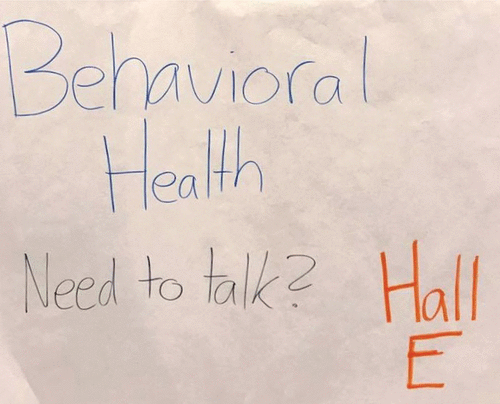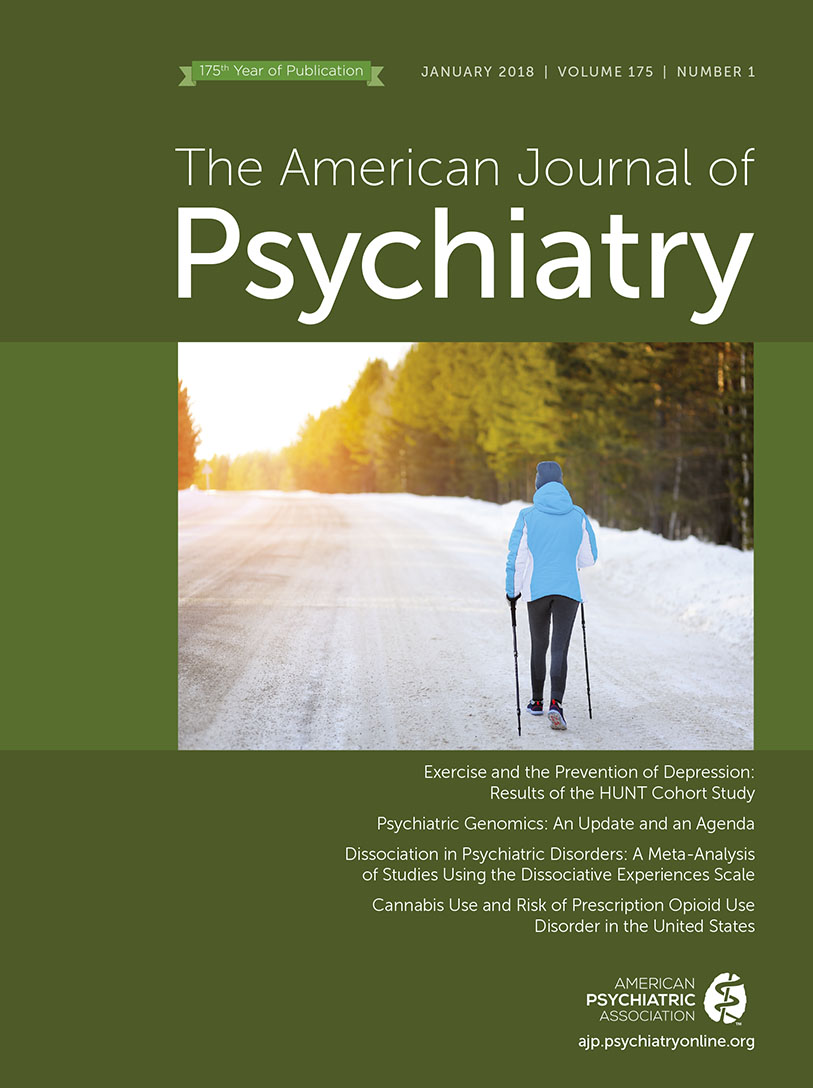Meeting the Mental Health Needs of Hurricane Harvey Evacuees

It started with a handwritten sign posted with Scotch tape at Houston’s George R. Brown Convention Center (GRB): “Behavioral Health: Need to talk? Hall E.” From that note rose a coordinated effort by mental health clinicians to treat patients at Houston’s main evacuation center in the aftermath of Hurricane Harvey. The number of people taking shelter at the GRB surged from an initial 5,000 to ∼10,000 the next day. The GRB opened its doors early Sunday morning, and two Baylor College of Medicine psychiatrists reached the scene by Monday. While the Disaster Medical Assistance Team (DMAT) initially provided one psychiatrist, it was soon apparent that additional clinicians would be needed. Over the next 2 weeks, Baylor College of Medicine, in collaboration with other institutions (e.g., University of Texas, Houston), met this need by sending 60 psychiatrists, psychiatry residents, and social workers to assist DMAT in staffing Hall E.
“Ms. A,” a woman in her mid-20s who lived with her mother, was brought to Hall E by a Red Cross volunteer because she looked distraught and wanted to speak to someone about resuming her psychotropic medications. Ms. A reported that she had woken up in the middle of the night to find her bedroom knee-deep in water. She felt shocked and desperate when she saw the water all around her: “I was screaming,” she said. “I thought I was going to drown.” She was also fearful for her mother, who was wheelchair bound and immobile. After she had located her mother and called for help, the two were rescued by boat and brought to the GRB.
Ms. A had been at the shelter for 2 days. Her chief complaints were sleeping difficulties and feeling depressed. She was tearful during the interview. Her worry was palpable as she repeatedly asked, “What is going to happen to us? Where are we going to go?” She reported feeling scared at the shelter because “it’s so crowded and there are strangers all around.” The evaluating psychiatrist provided psychoeducation about normal stress reactions and calming strategies, such as deep breathing, to help her manage her distress level. She reported two past psychiatric hospitalizations, one at age 15 for “bipolar disorder and schizophrenia,” the other in her early 20s. She also stated that she had taken quetiapine and another psychiatric medication (the name of which she did not recall) for many years, but had inconsistent follow-up with her providers.
Based on the limited information gathered during Ms. A’s initial visit, she was given a provisional diagnosis of an unspecified anxiety disorder, rule out acute stress disorder, with a reported history of “bipolar, schizophrenia.” Once collateral information was made available for the patient, her diagnosis was changed to schizoaffective disorder. The plan was to help Ms. A with her sleep difficulties, which can have a negative impact on mood, by initially prescribing a single dose of 50 mg of diphenhydramine. She was told to follow up with us, which she did, although it meant having to see a different mental health provider. Adequate medical record keeping was therefore of the utmost importance. On the fourth day of follow-up, the pharmacy was fully operational, and Ms. A was given a prescription for quetiapine.
Over 6 days, Hurricane Harvey dumped more than 20 trillion gallons of water on Houston, making history as the “nation’s wettest storm” (1). Over the course of 2 weeks, 232 evacuees (age range, 4–89 years; 50% male) sought mental health services in Hall E at Houston’s George R. Brown Convention Center. More than half of the patients treated had a preexisting mood disorder. The four most common primary disorders reported were bipolar disorder (31.9%), depression (19.8%), schizophrenia (14.2%), and anxiety disorders (9.1%). Nearly 50% of the evacuees had a secondary comorbid psychiatric diagnosis, and about 13% of the evacuees had a self-reported past history of PTSD (4.3% as a primary diagnosis). Obtaining a thorough psychiatric history for some of the patients was a challenge for the providers, and as a result, 19% of the evacuees seen were given an “unspecified disorder” diagnosis. When sufficient information was available—which at times required that the psychiatrist find someone who could provide collateral information—a diagnosis was made, with 15.5% being diagnosed as having bipolar disorder, 12.9% depression, and 6.9% schizophrenia.

FIGURE 1. Sign Posted at Houston’s George R. Brown Convention Center, Which Served as a Shelter for Thousands of Hurricane Harvey Evacuees
Initially, most of the individuals seen sought psychiatric services for medication provision, as many had to evacuate without their medication. Evacuation without medication is a common challenge after disaster, worldwide (2). However, given that pharmacy supply was an issue for the first few days, with only two psychotropic medications available (sertraline and fluoxetine), mental health providers relied on strategies from the Psychological First Aid manual (3), such as reflective listening, validation, psychoeducation, and concrete support (e.g., connecting individuals with staff from the Federal Emergency Management Agency and with sources of food and clothing) to address the difficulties the evacuees were facing. Over time, mental health providers were also helping individuals cope with the feelings that emerged as they navigated the bureaucracy to access needed services, which is common seen in postdisaster recovery (4). The difficulty accessing psychotropic medication calls attention to the need for collaboration with pharmacies to ensure continuity in psychotropic medication after natural disasters. Once the pharmacy was fully operational, the most common primary psychotropic medications prescribed to evacuees seen were quetiapine (19.4%), risperidone (5%), trazodone (5%), and sertraline (5.6%). Overall, more than 30 different types of medications were prescribed, and polypharmacy was utilized for 35% of the patients treated.
Disposition for most of the patients seen was difficult to track, as most had not received primary psychiatric care from our health system. However, few patients declined medication (2.6%) or left without being seen (7.3%). A total of 6% required transfer to an emergency department or a psychiatric hospital upon evaluation, which suggests the need to establish triage protocols for the most acute patients after disasters.
Ms. A was one of the many individuals who were treated at the shelter, and the challenges faced in meeting her mental health needs in the aftermath of a disaster were common during the first few days of responding. Ms. A’s limited capacity for self-reporting, confounded by her high level of distress, interfered with the clinician’s ability to obtain an accurate psychiatric history. Furthermore, while her chief complaint included difficulties with mood, the only need that could be addressed immediately with medication was her difficulty sleeping. She was, however, able to receive other forms of psychological care (psychoeducation, supportive therapy) as she followed up with providers.
In sum, our experiences in treating patients at an evacuation center uncovered many challenges, including medication access, confidentiality, obtaining a thorough clinical interview, handling acute/suicidal patients, and tracking disposition. It is critical that an adequate number of mental health providers be positioned in shelters and evacuation centers, and that they be well equipped with first-line medications and trained as first responders to provide care, maintain medication continuity, and assess for presence or exacerbation of psychiatric symptoms. Ensuring confidentiality by having secure locations for sessions, along with planning for follow-up clinics, may help keep attrition to a minimum and improve clinicians’ ability to provide follow-up treatment and track patient disposition.
1 Begley D: Harvey will make history books for nation’s wettest storm. Houston Chronicle, Sept 15, 2017. http://www.houstonchronicle.com/news/article/Harvey-will-make-the-history-books-for-nation-s-12201641.phpGoogle Scholar
2 : Disaster-driven evacuation and medication loss: a systematic literature review. PLoS Curr 2014; 6:6Google Scholar
3
4 : Mental health services for victims of disasters. World Psychiatry 2002; 1:149–152Medline, Google Scholar



